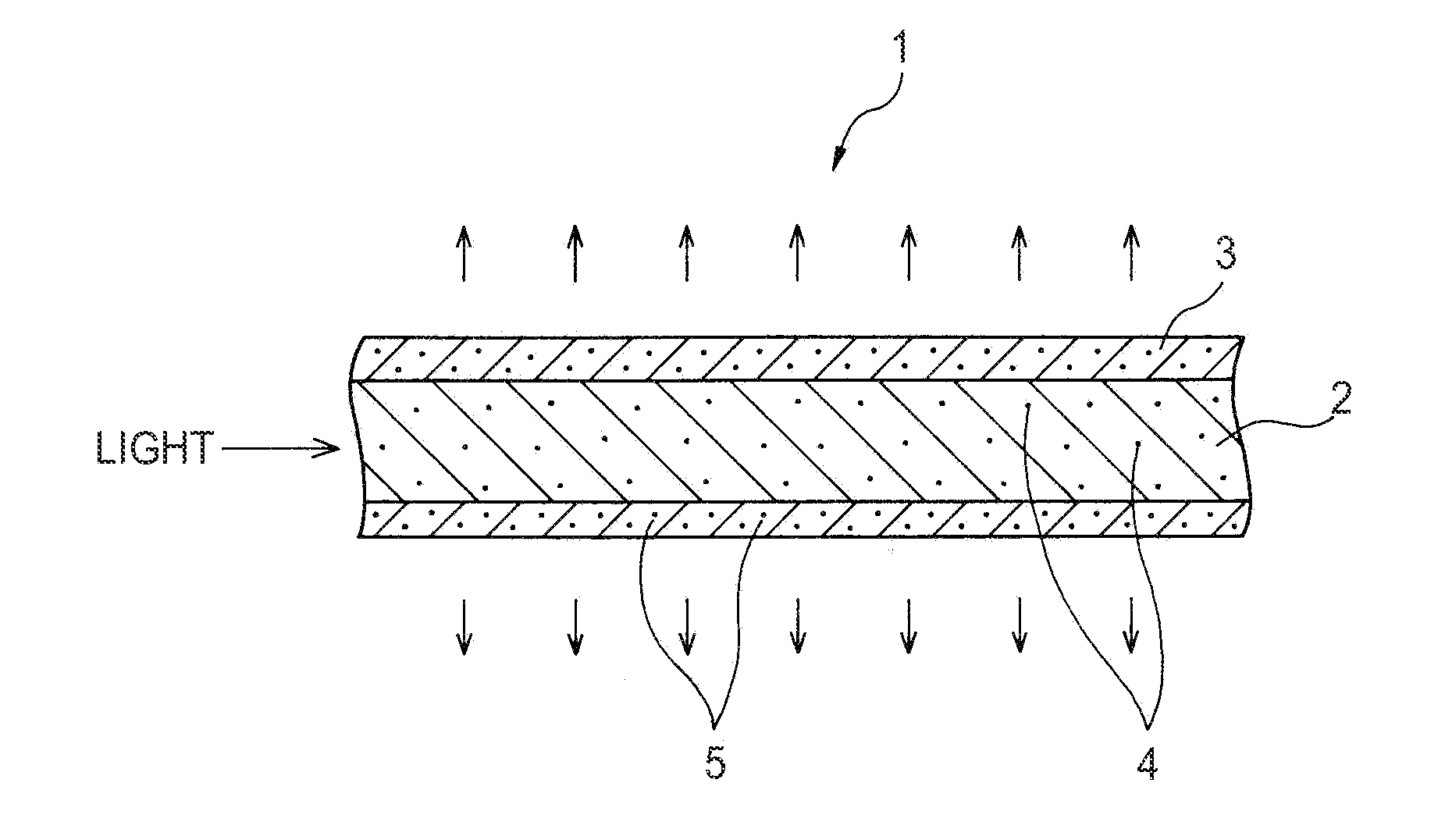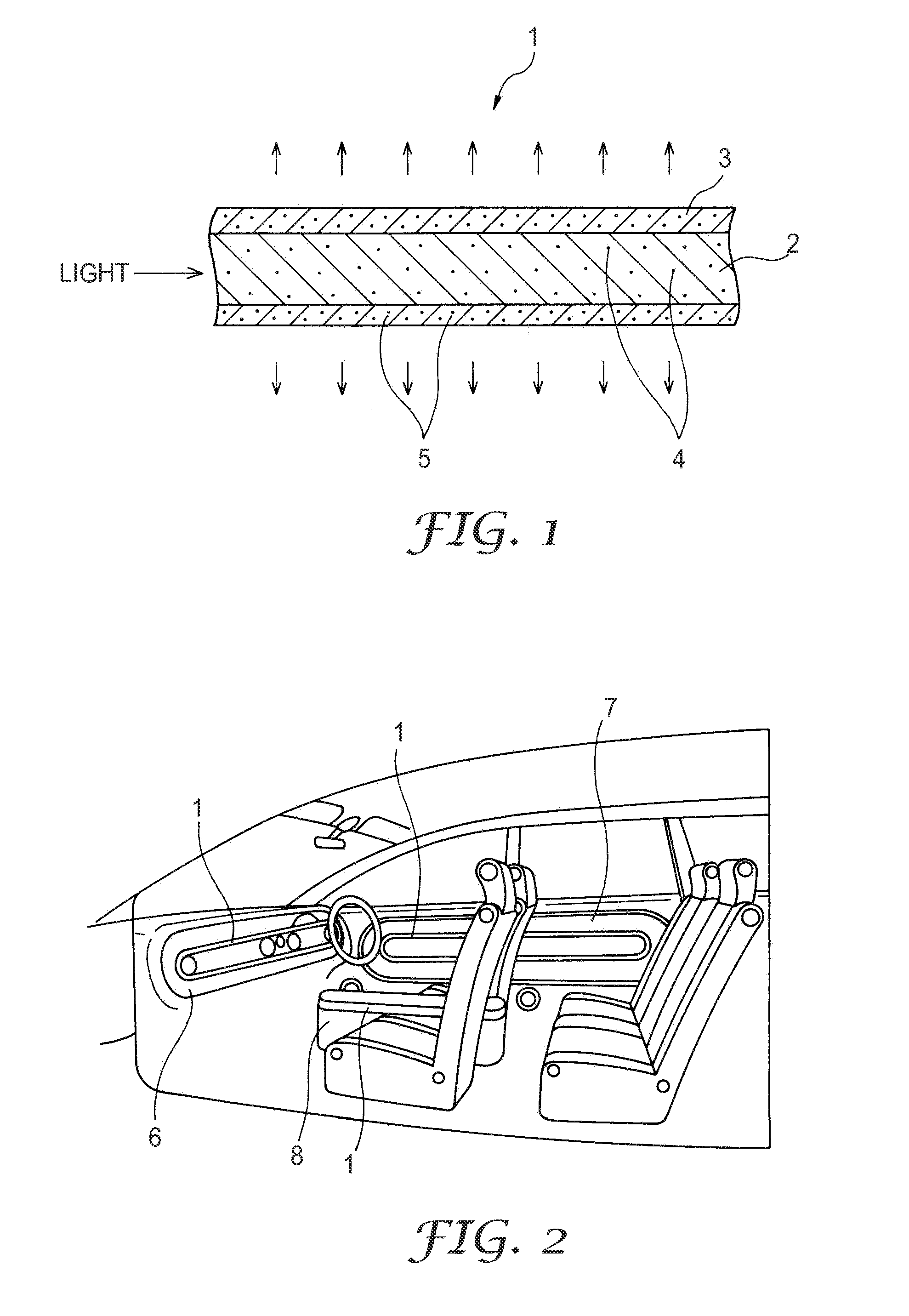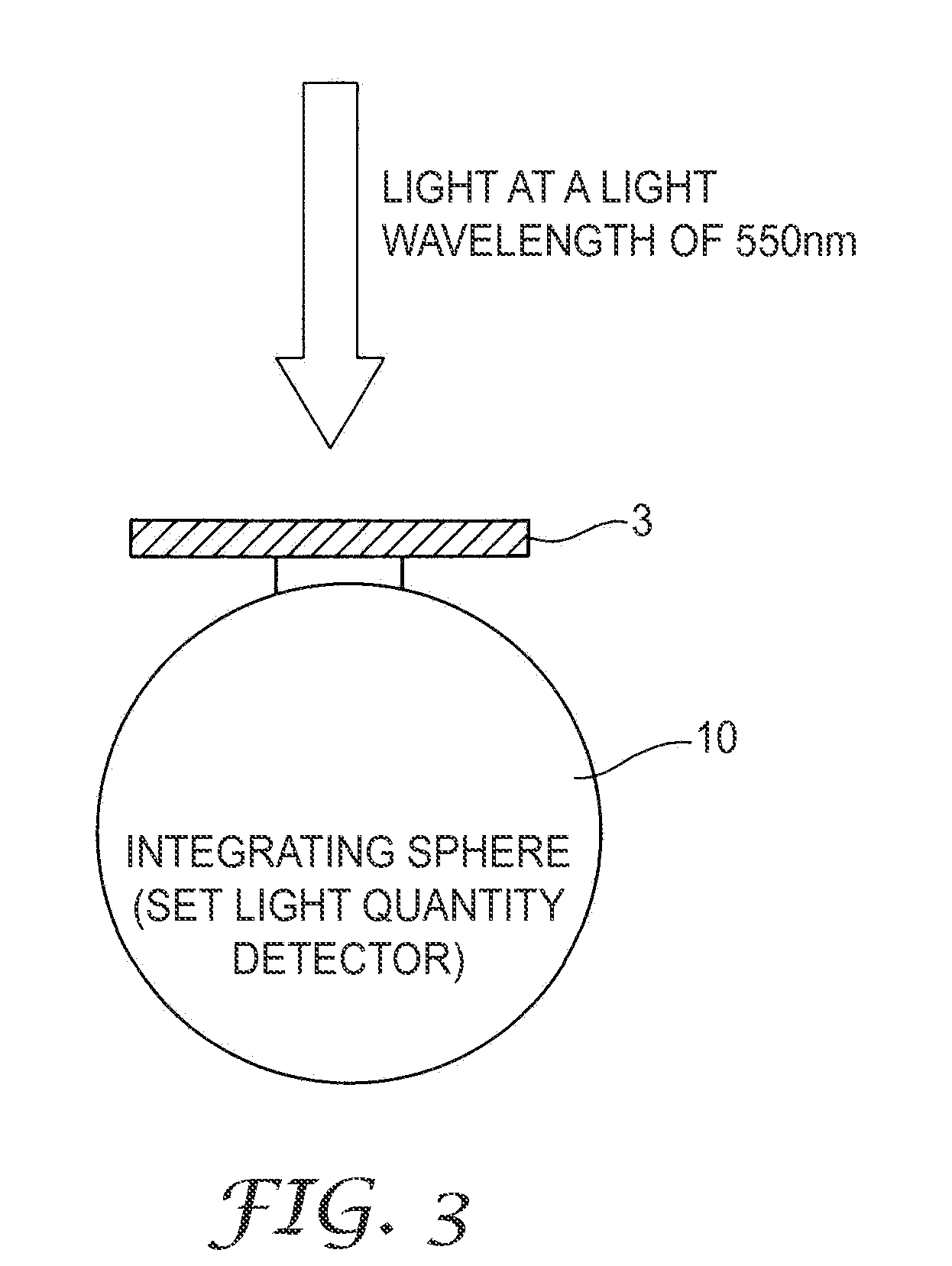Side lighting optical fiber
a technology of optical fibers and side lights, applied in the field of side lighting optical fibers, can solve the problems of impairment of the external appearance of the fiber, etc., and achieve the effect of good external appearance and characteristics
- Summary
- Abstract
- Description
- Claims
- Application Information
AI Technical Summary
Benefits of technology
Problems solved by technology
Method used
Image
Examples
example 1
1. Preparation of the Clad
[0026]100 parts by mass of tetrafluoroethylene hexafluoropropylene copolymer (FEP) (obtained under the trade designation “FEP-100J” from Du Pont Mitsui Fluoro chemicals Co., Tokyo, Japan), and 1 part by mass of FEP resin dispersed with 10% by mass of zinc oxide (obtained under the trade designation “FCMSM1109-White (D)” from Dainichiseika Color & Chemicals Co., Tokyo, Japan, were placed in a can and were mixed for 1 minute by hand shaking. The resulting mixture was extruded using an extruder with the mold heated to about 395° C. at speed of about 3 mm / minutes, and the extruded molding was cooled with water. Tubular clad of 3.25 mm in outer diameter and 0.25 mm in thickness was thus obtained. About 0.099% by mass of zinc oxide was contained in this clad as light scattering agent 5. The clad thus prepared had light transmittance of 80% at light wavelength of 550 nm. Method of measuring light transmittance is described below.
2. Preparation of the Core
[0027]Cor...
example 2
[0029]75 parts by mass of FEP (“FEP-100J”) and 1 part by mass of FEP resin dispersed with 10% by mass of zinc oxide (“FCMSM1109-White (D)”) were mixed, and was formed into a tube of 3.25 mm in outer diameter and 0.25 mm in thickness. With this, about 0.132% by mass zinc oxide was contained in this clad as light scattering agent 5. Resulting clad 3 had light transmittance of 72% at light wavelength of 550 nm. Core 2 was prepared as described for Example 1 to provide side lighting optical fiber 1.
example 3
[0030]150 parts by mass FEP (“FEP-100J”) and 1 part mass FEP resin dispersed with 10% by mass of zinc oxide (“FCMSM1109-White (D)”) were mixed, and formed into a tube of 3.25 mm in outer diameter and 0.25 mm in thickness. With this, about 0.066% by mass of zinc oxide was contained in the clad as light scattering agent 5. Clad 3 thus prepared had light transmittance of 83% at light wavelength of 550 nm. Core 2 was prepared as described for Example 1 to provide side lighting optical fiber 1.
PUM
 Login to View More
Login to View More Abstract
Description
Claims
Application Information
 Login to View More
Login to View More - R&D
- Intellectual Property
- Life Sciences
- Materials
- Tech Scout
- Unparalleled Data Quality
- Higher Quality Content
- 60% Fewer Hallucinations
Browse by: Latest US Patents, China's latest patents, Technical Efficacy Thesaurus, Application Domain, Technology Topic, Popular Technical Reports.
© 2025 PatSnap. All rights reserved.Legal|Privacy policy|Modern Slavery Act Transparency Statement|Sitemap|About US| Contact US: help@patsnap.com



